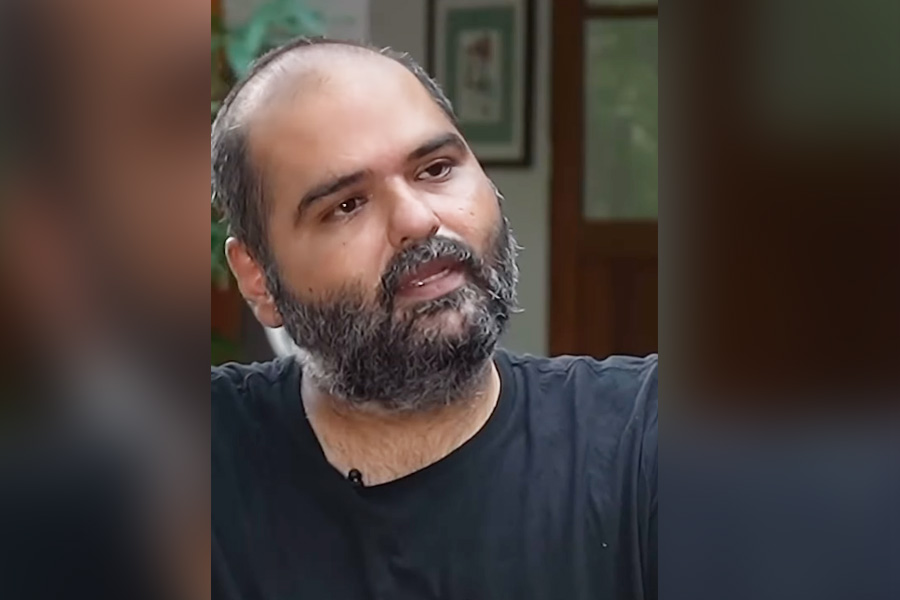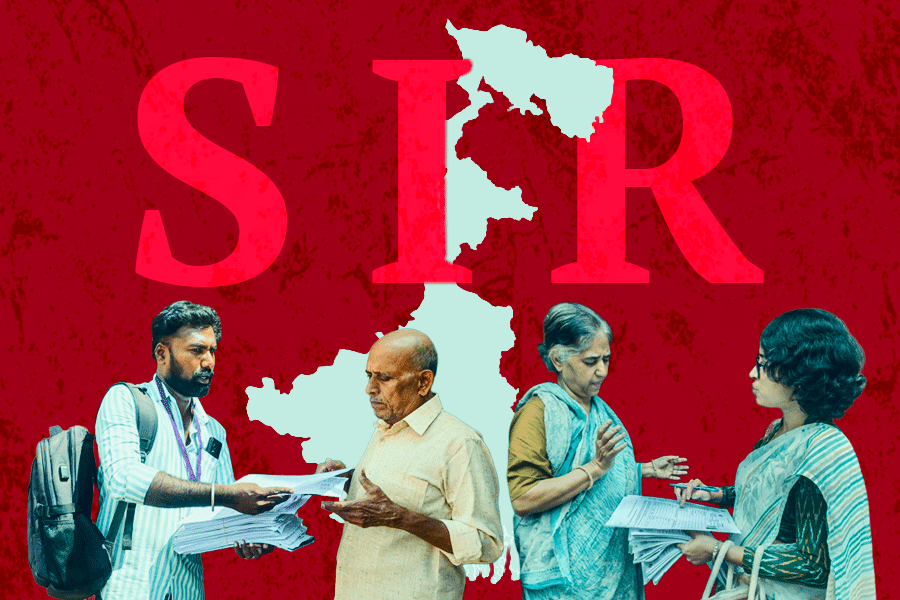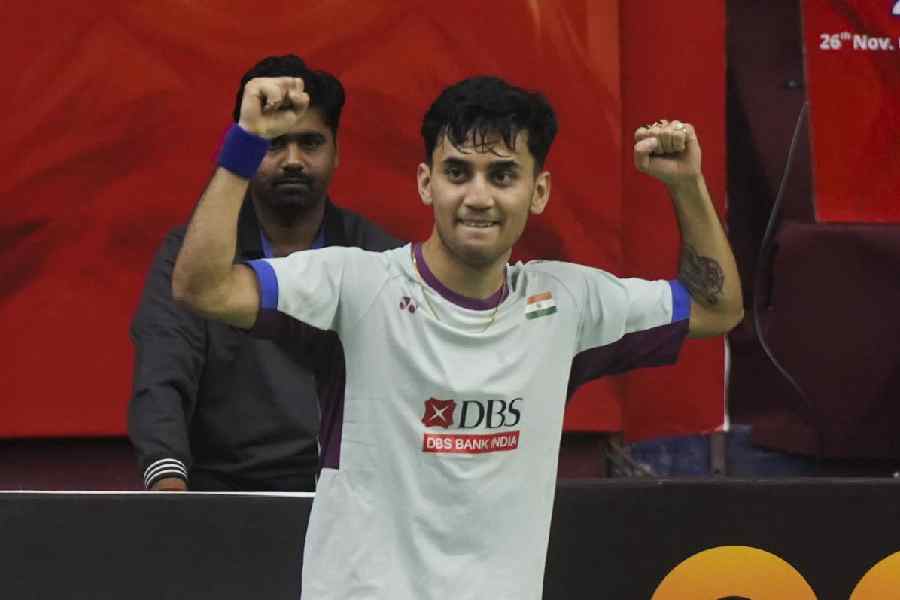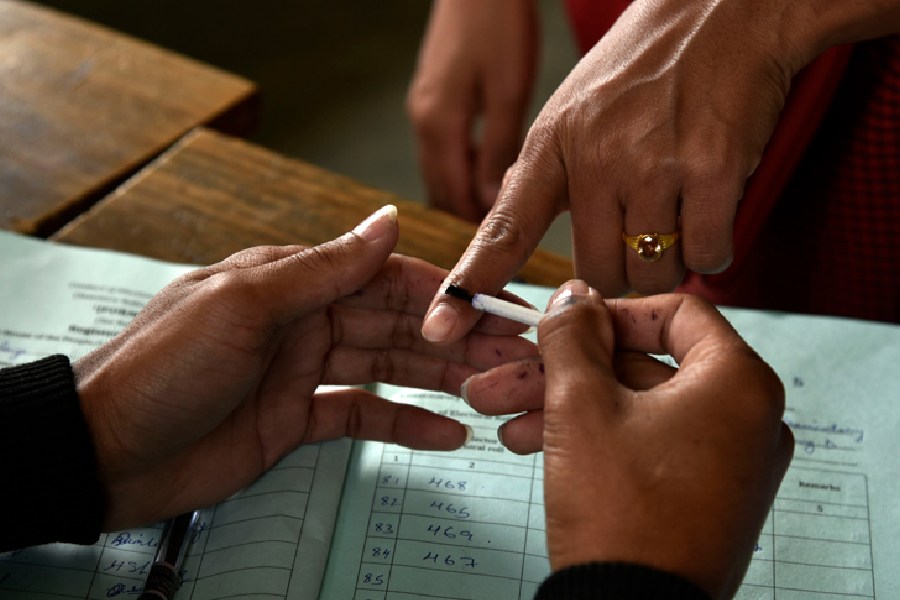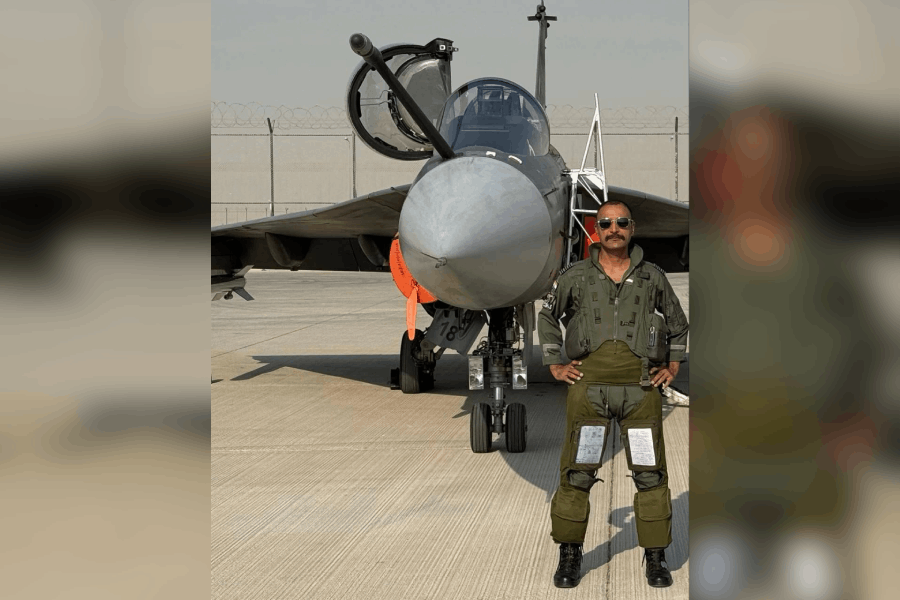Pandit Ulhas Kashalkar, presented khayal at its best at the end of a programme to celebrate the 90 years of The Calcutta School of Music at the G.D. Birla Sabhagar last Monday. The evening opened with a Bharat Natyam recital by Shilpi Baruri, the able pupil of the famous Yamini Krishnamurthy. The second to perform was Joya Biswas, the premier lady sitar player today.
The programme having started late, she, the head of the CSM Indian classical music section, had the added responsibility of keeping things in order. So, very much like her guru Pandit Ravi Shankar, she managed to make her recital as compact as possible. Her 29-minute alap and gatkari in Tilak Shyam sounded the way it would on one side of an off-the-shelf cassette. The thing to note was that the artiste still has among the most tuneful and skilled pair of hands in the business.
Samar Saha, the expert tabla accompanist, working out appropriate rhythmic replies and artistic theka variations during the vilambit and drut teental gatkari, turned out one of his best performances to date. The 15-minute Khammaj gatkari based on a classic drut teental thumri (Na manungi) was even more captivating.
Pandit Kashalkar, like quite a few artistes before him, did the audience a bad turn by not announcing the raga his first khayal was in. He also masked it well in the four-minute aochar by first playing around with the mandra komal nishad and the madhya saptak komal gandhar and then with the mandra dhaivat. He applied the tivra madhyam (which blends with the komal nishad as beautifully as oil and water!) in the very last moment and went into the rupak tala khayal composed by Jagannathbua Purohit (Gunidas, the creator of Jogkauns) of the Agra gharana. This was the rare raga Holikauns: one of the ugliest and most difficult to sing ever conceived: Sa ga ma Dha ni `Sa/`Sa ni Dha ma ga Sa.
Try to sing just the scale and you are most likely to sharpen the nishad to natural or lose pitch unconsciously! Ustad Bade Ghulam Ali Khan, it is said, used to call the raga Abhogi lame as it had four notes in the first half of the octave and only two in the second: one wonders what he would call Holikauns!
In the honeyed voice of Pandit Kashalkar, it sounded like the sweetest raga conceivable; and here lies the key to the greatness of the recital. Using sustained notes, dynamics and pukars like a master, Pandit Kashalkar virtually built up khayal singing history. The taankari too was excellent and Ananda Gopal Banerjee on the tabla heightened the flavour with appropriate jawabs and patches of saath sangat.
Also notable was the harmonium accompaniment by Rupashree Bhattacharya. The brief drut ektal khayal (also by Gunidas) too was part and parcel of the magic package. The same level of artistry was very much in evidence in the classic madhya drut teental khayal in the rather rarely performed raga Barwa. Here, the generally slightly strident dynamics of the typical Agra phrase patterns and pukars were developed with unprecedented smoothness and grace. Equally good were taan patterns that came next. The jhaptal and drut teental compositions in Sohoni were also excellently sung.


